Sourcing & Manufacturing
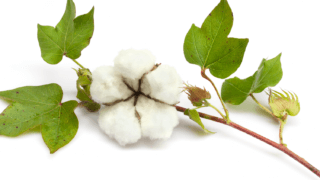
U.S. Cotton Suppliers
Get connected with U.S. cotton yarn spinners, knit and woven fabric mills, dyers and finishers, printers, and cut & sew manufacturers.

History of Textile Printing
From as early as 23 A.D., printing has been used to create patterns on textiles. Learn more about the history of printing.
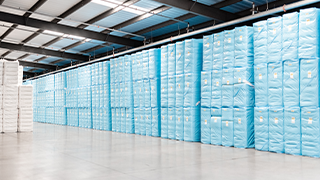
Cotton Traceability Basics
Understand cotton, cotton trade, and manufacturing practices that can affect sourcing and traceability.
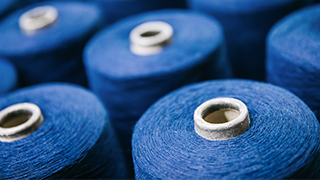
History of Yarn
From ancient Egypt to Peru, cotton was grown and spun for textile purposes. Learn more about the history of yarn manufacturing.
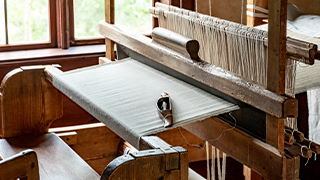
History of Weaving
Learn more about the history of weaving—from the first use of a hand-operated loom to the invention of the shuttle to steam-powered looms.
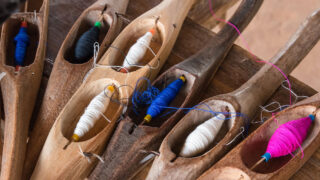
Weaving Basics
Get a high-level look at the basics of weaving, including its history and the basic actions of interlacing yarn to form a woven textile.
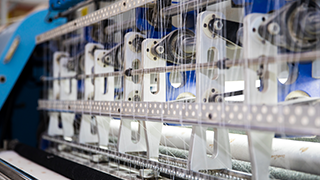
Motions of the Weaving Loom
Learn about basic functions of the weaving loom—from shedding and filling insertion to beat-up and warp control.

Designing Wovens
Take a look at what goes into designing woven textiles, from conception to creation, including technical design and design implications.
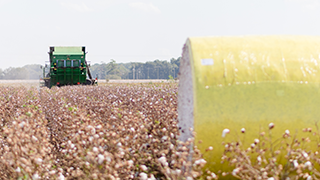
U.S. Cotton Traceability
Learn what makes U.S. cotton stand out from the rest with 100% traceability.
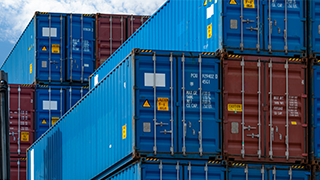
Trade Patterns for Sourcing Cotton
Where is cotton grown? Learn about the global import and export of cotton.

Knit Basics
What are the basics of knitting? Learn the different elements of the knit structure and about the two systems of knitting: weft and warp.
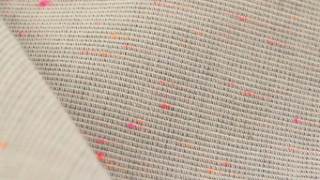
Plain Weaves
The plain weave is the oldest, simplest, and most often used woven structure. Learn more about plain weaves and plain weave variations.
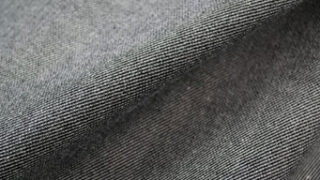
Twill Weaves
Twill fabrics have diagonal lines on the cloth face formed by floating warp yarns over filling yarns. Learn more about twill weaves and twill weaves.
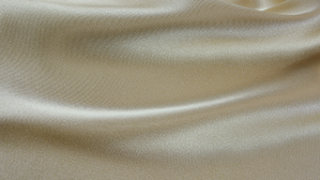
Satin Weaves
Satin weaves have a soft, smooth, and lustrous face with no appearance of pattern formation. Learn more about satin weaves and satin weave variations.

Jacquard Weave
Jacquard is a patterned fabric produced on a weaving loom. Learn more about the jacquard weave.
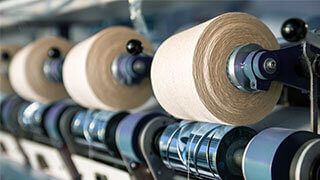
Basics of Yarn Manufacturing
Although the spinning of cotton yarn is said to have originated in India, Egypt claims to be the first to have explored these techniques.

Independent Testing Laboratories
To support your product development process, Cotton Incorporated has compiled a list of potential independent testing laboratories.
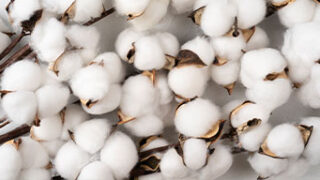
Natural vs. Synthetic Fibers
Whether you work in agriculture, fashion or manufacturing, knowing cotton fiber is the right choice isn’t always enough. Get the science.

Cotton Traceability Technology
Learn how to evaluate technological solutions that are beneficial to the manufacturing and sourcing of cotton.

E-Book: Classification & Tariff Engineering
Download the full e-book, Customs and International Trade Strategy: Classification & Tariff Engineering.

E-Book: Free Trade Agreement Programs
Download the full e-book, Free Trade Agreement Programs.
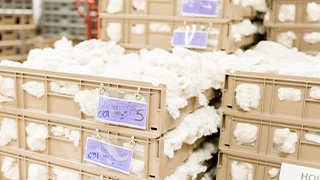
Cotton Classification
The United States classes 100% of its cotton bales. Learn more about USDA cotton classification.

Cotton Fiber Development & Maturation
Cotton plant development occurs in specific stages of reproductive growth and cotton plant development must be optimized for ideal fiber production.
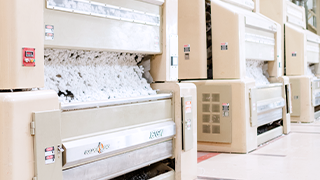
Cotton Fiber Harvesting & Ginning
The first step in cotton processing is harvesting, and, for the farmers, it’s an important and personal process.

Cotton Fiber Qualities & Evaluation
Learn about the combination of instrument evaluations and skilled cotton classer assessments used to determine cotton fiber properties.
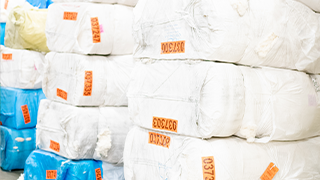
Engineered Fiber Selection® Software
Cotton buyers and sellers improve cotton logistics, evaluation, optimization, and profitability with the EFS® System Suite of software.
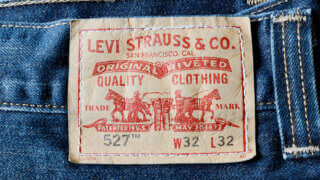
History of Denim
From the origin of the word "jeans" to its revolution in the fashion industry to where it gets its color, learn more about the history of denim.

Dyeing Basics
Dyes are highly colored substances that can be applied to a substrate to impart color with some degree of permanence.
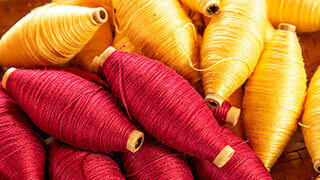
Dyeing Preparation
Proper preparation of cotton fibers, yarns, and fabrics to undergo dyeing is critical and can prevent issues that may occur later on.
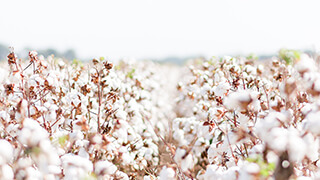
Technical Guide
This technical guide on cotton for nonwovens covers agricultural production, cotton properties and preparation, and cotton morphology and chemistry.

Marketing Resources
Discover why cotton is the right choice for various nonwoven markets and products.

Sourcing Directories
Connect with suppliers of various types of cotton fiber, nonwoven materials, or converted nonwoven products.

Webinars
Watch the recordings of recent webinars on the hypoallergenic properties of cotton and the baby care market.

Cotton Textile Printing
Learn about the history of textile printing and the impact that your choice of fiber, yarn, and fabric has on the final product.

The Lab Dip Process
The lab dipping process is the first step in developing and approving the color of a product.
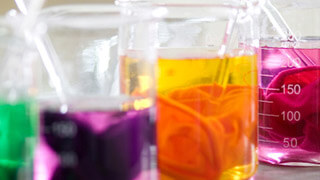
Advances in Sustainable Dyeing
Discover new ways to reduce water, energy, and chemicals during the dyeing process.
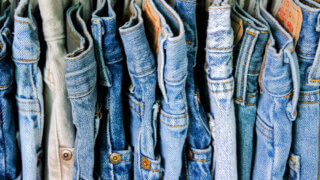
Denim Manufacturing Basics
Get a large view look at the process behind denim manufacturing—from weaves and weights to non-conventional denim fabrics.
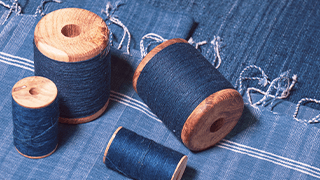
Denim Yarn
How denim looks and feels depends greatly on its yarn. Size, twist, ring or open-end spinning—see how they all play a role in the final look.
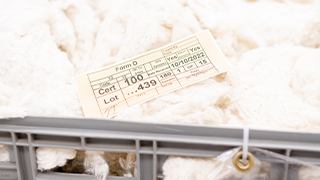
How Fiber Quality Impacts Your End Product
In this webinar, we will walk you through key aspects of choosing the right cotton fiber for your end product.
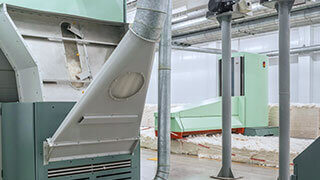
Yarn Spinning: Fiber Opening & Cleaning
Explore the first steps in yarn spinning: opening and cleaning.
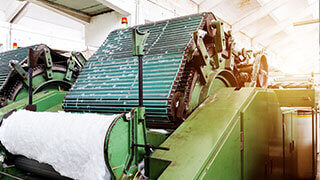
Yarn Spinning: Batt Formation & Fiber Carding
Explore the next steps in yarn spinning: batt formation and fiber carding.

Yarn Spinning: Fiber Preparation
Explore the final step in yarn spinning: fiber preparation.
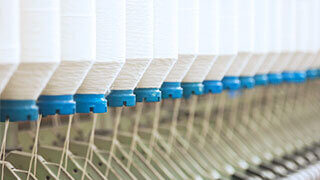
Yarn Spinning Processes
Learn about the three different methods for spinning: ring spinning, rotor spinning, and air-jet spinning.
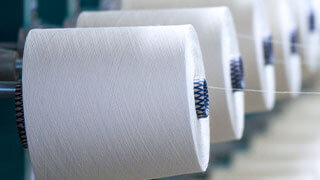
Yarn Spinning: Numbering
Yarn numbering is a term used to describe a yarn’s physical size or, more specifically, its linear density.
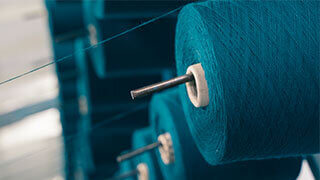
Yarn Spinning: Yarn Twist & Ply
No matter the spinning system employed, all yarns contain twist to hold the fibers together.
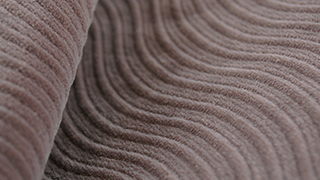
Pile Weaves
Pile fabric has yarns intentionally protruding from the surface of the cloth in loops. Learn about the pile weaves corduroy, velvet, and velveteen.

Dobby Weave
Fabric made on a dobby loom allows weaves to be created using small geometric patterns. Learn about the dobby loom and dobby fabric.

Specialty Weaves
Learn about the specialty weaves Bedford cord, crepe, and piqué
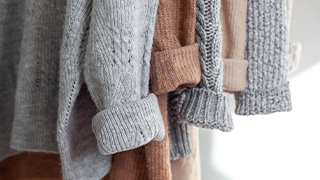
Sweater Manufacturing Basics
Learn about cut and sew, panel knitting, full fashion, and knit-to-wear garments.

Sweater Manufacturing: Dyeing & Finishing
Learn about dyeing, finishing, and steaming/shaping garments.

Denim Weaving
When denim is placed on a loom, a number of elements and manufacturing decisions will determine the final look of the denim.
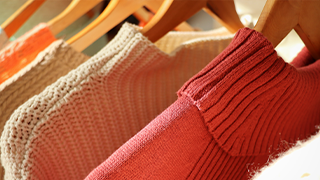
Sweater Design
Learn about sweater design, including construction, color consideration, product target, and computer-aided design.
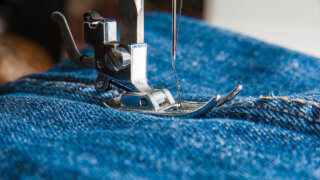
Denim Garment Construction: Spreading, Cutting, & Sewing
A lot goes into making a pair of jeans. First, the denim is spread and cut. Then, each piece must be sewn on, including belt loops and zippers.
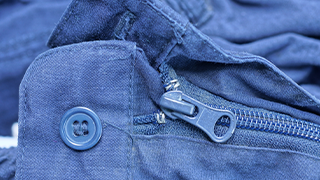
Garment Components
Learn about thread, closures, zippers, buttons, findings, trim, and shaping materials.

Garment Markers, Spreading, & Cutting
Learn about pattern engineering, marker making, and cutting methods.
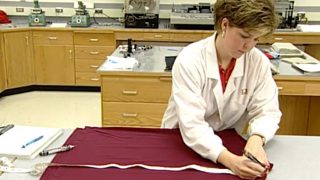
Shrinkage Testing
Learn about shrinkage testing.
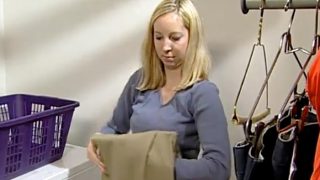
Knit Fabric Shrinkage
Learn about the fundamentals of knit fabric shrinkage including knitting parameters, dyeing and finishing parameters, and chemical finishing.
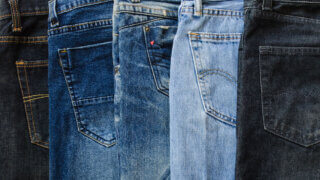
Denim Basic & Premium Finishing
Denim is a part of nearly everyone’s wardrobe. Simple or elaborate—fabric finishing is part of virtually every denim garment.
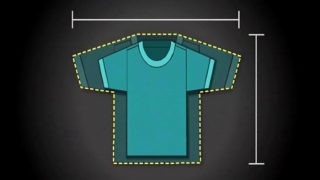
Shrinkage Basics
Learn about the basics of shrinkage.

Denim Finishing Machinery
Take a look at some of the machines used in denim finishing, including rotary machines, dryers, and presses.
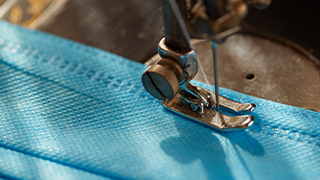
Garment Construction
Learn about seams and stitches, t-shirt construction, jean construction, and dress-shirt construction.
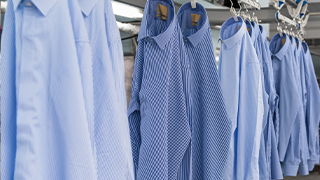
Quality Control
Learn about fabric quality and systems and inspection.
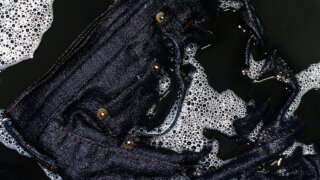
Denim Wet Finishing
Wet denim finishing uses washing techniques to alter a garment's appearance. From stonewashing to bleach to softeners—learn more about wet finishing.
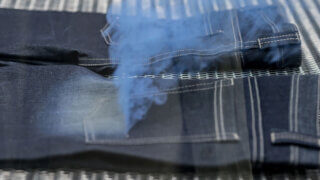
Denim Dry Finishing
Dry finishing mimics what happens naturally to denim after regular wash and wear. From laser to whiskering to sanding—learn more about dry finishing.
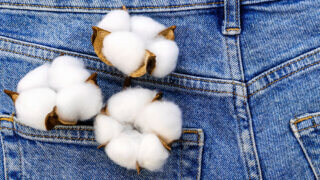
Sustainable Denim Processing
Brands and consumers are looking for more sustainable options without sacrificing the look and feel that consumers love about their favorite jeans.
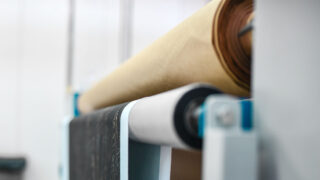
Printing Process
Explore the printing process from start to finish. Learn the basics of preparation, printing, drying, fixation, and afterwashing.

Types of Printing
Learn about the different types of printing: flatbed screen printing, rotary screen printing, engraved roller printing, and digital inkjet printing.
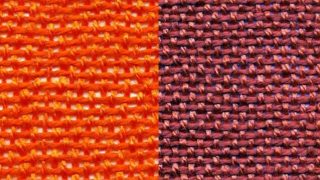
Understanding & Overcoming Shrinkage
Controlling shrinkage of textile and apparel products impacts the design and production planning in manufacturing or sourcing products.
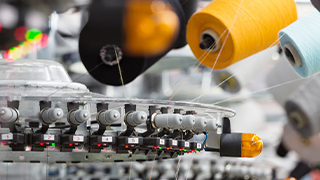
Sock Knitting Basics
Learn about sock knitting basics, including machine components, the knitting cylinder, the knitting needle cycle, and machine types.

Special Techniques in Printing
Learn about special printing techniques, including resist printing, discharge printing, and transfer printing.

Comparing Printing Techniques
Take a look at the key features, advantages, and disadvantages of rotary printing, cool transfer printing, and digital printing.

Quality Testing: Construction
Learn about quality testing: fiber, yarn, and fabric.

Designing Knit Textiles
Fancy patterns and stitches add character and functionality to knit fabrics. Learn about designing knitting stripes, jacquards, and flat knits.

Quality Testing: Care & Appearance
Learn about quality testing: appearance, colorfastness, lightfastness, rating procedures, and dimensional stability.

Garment Durability: Strength
Learn about quality testing for strength and durability.
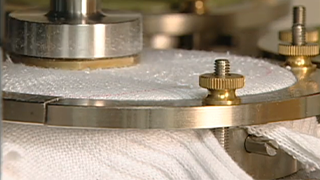
Garment Durability: Abrasion Resistance
Learn about quality testing for abrasion resistance.

Single Knits
Single knits are defined by the use of one needle bed. Learn how this system works across various knitting machinery.

Double Knits
With two needle beds, double knits offer different construction textile opportunities. Learn about double knits in warp and weft knitting
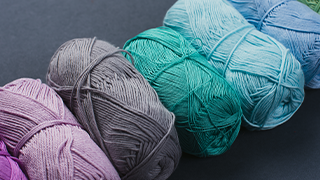
Sock Components
Learn about sock components, including welt formation, heel pocket formation, cushioning, reinforcement, patterning, and yarn for socks.
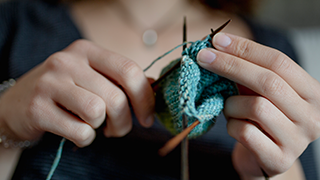
Sock Stitch Formations
Learn about stitch counts and types of stitches.
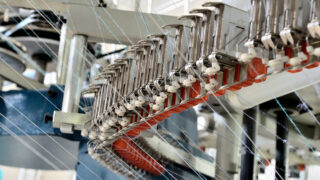
Knitting Machinery
Learn about the different types of machines for warp and weft knitting.
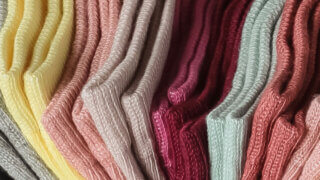
Sock Dyeing & Finishing
Learn about rotary drum machines, paddle machines, extraction, continuous scour and bleach, dyeing, finishing, and boarding.

Seamless and Integral Knitting
Learn about the different methods to produce seamless and whole-body garments on both circular and flat-bed machines.
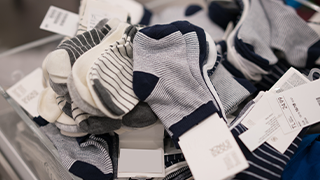
Sock Inspection & Packaging
Learn about inspection and packaging.
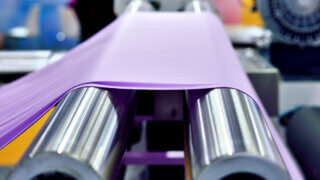
Mechanical Finishing
The final appearance and serviceability of fabric may be achieved through mechanical means, such as drying, sanding, napping, shearing, and more.
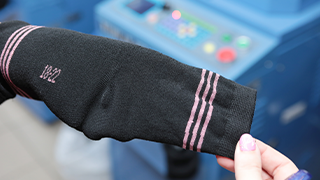
Sock Testing
Learn about fit, stretch, abrasion resistance, pilling, strength, crocking, lightfastness, and colorfastness.

Chemical Finishing
Chemical finishing can affect many qualities of a fabric or garment, through the use of softeners, hand builders, fluorochemicals, resin, and enzymes.
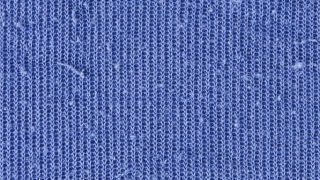
Garment Durability: Pilling
One of the most common complaints concerning product aesthetics and performance is that of pilling.
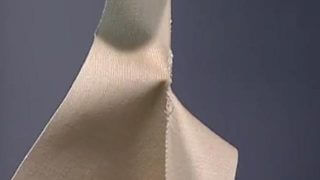
Quality Testing: Product Sampling & Conditioning
Learn about quality testing: product sampling and conditioning.

Understanding & Overcoming Skewing
Learn to improve the performance of your quality goods as textile expert Don Bailey delves into key textile techniques.

Cationic Cotton
Cationic cotton can transform your dyeing routine into an environmentally responsible and efficient process.
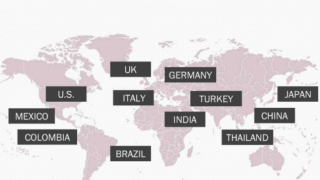
Consumers Speak: Apparel Changes that Impact Satisfaction
Consumer reviews impact purchases. Learn how apparel performance issues and fabrication changes can impact shopper loyalty to brands and retailers.
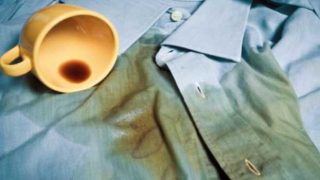
Quality Assurance: Stains
Oil and stain resistance are desirable attributes of fabrics—in the garments we wear to protect us, well, against ourselves!

Quality Assurance: Water Testing
Learn about the absorption of liquid and its movement in relation to fabric.